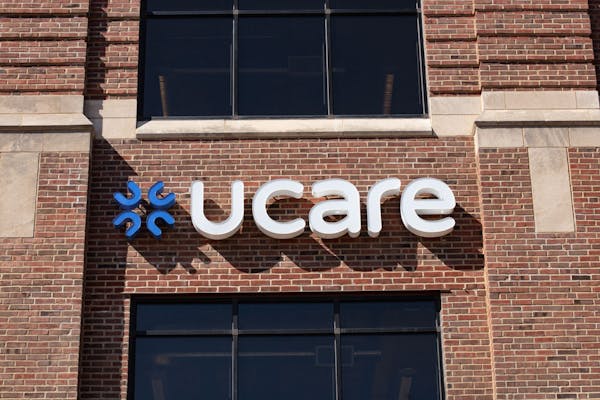HealthPartners has frozen enrollment in its Medicaid HMO and exited a program for state residents with disabilities after losing nearly $200 million on operations last year.
The red ink was driven by the Bloomington-based nonprofit group's health insurance business, which saw surging medical expenses in 2024 like those generating large operating losses last year at rival health plans UCare and Medica.
HealthPartners was buoyed, however, by just over $250 million in investment gains, which helped maintain financial reserves at Minnesota's second-largest nonprofit group in terms of revenue.
CEO Andrea Walsh told the group's annual meeting Tuesday that HealthPartners targets an operating margin of 2% to 3% to fund ongoing capital investments and new program needs.
"The revenue we collected wasn't enough to cover our costs, and our organization recorded an operating loss of about 2.2%," Walsh said.
"On the upside, we maintained adequate cash reserves," she added. "Because of strong investment income and careful management of discretionary spending, for the entire year we reported a positive net income of 0.8%."
HealthPartners is unique among the state's biggest health care nonprofits for running both a large health insurance business as well as a big network of health care providers. With operations that include Regions Hospital in St. Paul, Methodist Hospital in St. Louis Park and Park Nicollet clinics, it ranks as the fifth-largest employer in the state, with 26,300 workers in Minnesota.
As losses in the insurance business were accumulating last year, HealthPartners decided it would exit as of April 1 a state insurance program called Special Needs Basic Care, which provides managed care coverage for adults with disabilities in the state-federal Medicaid program (called Medical Assistance in Minnesota).
About 6,200 people this spring have had to find a new HMO, as a result. In addition, HealthPartners at the start of the year stopped taking new enrollees in other parts of Medical Assistance, where the nonprofit continues as a managed care organization.
State payments to HMOs have been unsustainably low, argued Penny Cermak, the HealthPartners chief financial officer.
"We need reimbursement to cover costs," Cermak said in an interview. "As we've been working with [the state] on that, we still don't have the rates to cover the cost increases that we're seeing."
Officials at the state Department of Human Services (DHS), which runs the Medical Assistance program, said they're aware of insurers' concerns.
"As part of our commitment to adequate rates, DHS regularly reviews rates for any needed mid-year adjustments," the department said in a statement. "DHS reviewed and adjusted rates 2024 to account for various factors and are committed to conducting the same analysis in 2025."
Even with the challenges, S&P Global in an April report maintained its financial strength and credit ratings on HealthPartners. The rating agency lowered the outlook for HealthPartners in December due to recent weakness in operating performance.
"Like many health plan peers, HealthPartners has faced claims pressure across multiple products ... which may take time to resolve," analysts at S&P wrote.
"HealthPartners' operating performance typically benefits from its business diversity between the health plan and care delivery business. However, solid growth in the care delivery business in recent periods from higher utilization has not been enough to offset the health plan's cost pressures, which will likely remain in 2025."
In 2024, HealthPartners posted an operating loss of $197.9 million on revenue of $9 billion, compared to an operating profit of $15.4 million the previous year. After factoring investment returns in 2024, revenue exceeded expenses by $71.4 million.
The Minnesota Star Tribune uses the term "profit" to describe earnings at the state's largest nonprofit groups to reflect the significant capacity of these organizations to make money for reinvestment in operations.
During the annual meeting, Walsh noted HealthPartners has extended its strategic alliance with for-profit health insurance giant Cigna for another 10 years. The agreement with the Connecticut-based insurer means insurance subscribers in Minnesota can get care out-of-state via Cigna's network.
Walsh provided an update during the meeting on the health system's plans for a new replacement hospital in Stillwater as well as efforts to improve access to mental health care. Over the past four years, she said, HealthPartners has added more than 3,000 providers to its mental health network for health insurance customers. The care system, meanwhile, has developed a program in which primary care patients who mention mental health concerns can see a behavioral health specialist the next day.
Demand for health care services coming out of the COVID-19 pandemic has persisted at unprecedented levels, said Dr. Mark Sannes, chief medical officer of the care group at HealthPartners, leading to longer waits for appointments. Efforts to boost capacity and access are beginning to pay off, Sannes said, with about 54% of specialists this year reporting shorter waits than in 2024.
But demand for GLP-1 medications that help patients with diabetes and weight loss remain a huge financial challenge, Walsh said, because they cost about $24,000 per year for a single patient.
"You do the math and it can't be recouped in premiums," she said. "People can't afford it."
Sannes added: "When you look at the numbers across the United States, with 60% of the population falling in the overweight or obese category, the numbers don't work at the current price point. ... This is a class of medications that has great promise, and I think we will use to a greater degree in the future. But it's a math issue right now."

To reset downtown Minneapolis skyway life, building owners cut deals with retailers

Ramstad: AI is English-centric, but it's picking up Hmong quickly
Don't throw away perks that come with insurance and memberships

Despite expense, long-term financial return on bachelor's degree still beats other options

